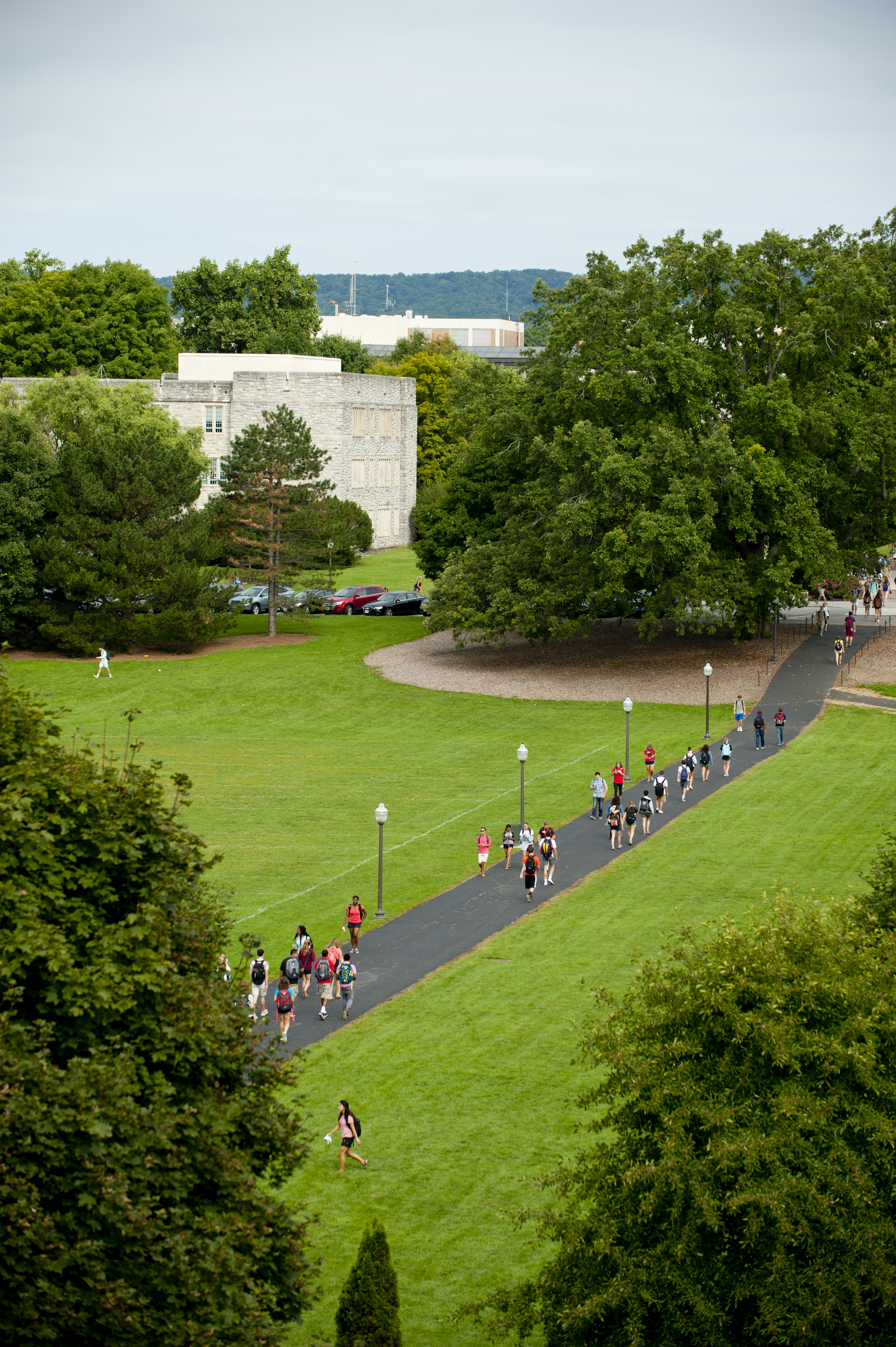Students join the team seeking to find a better path across the Drillfield

Two students have joined an interdisciplinary team of faculty and staff members to find alternatives to the paths that currently cross Virginia Tech's Drillfield.
The team is examining options that can carry thousands of students, including those with mobility needs, safely across the Drillfield each day while being visibly appealing, easily maintained, and having limited impact to recreational activities.
Michael Roselius of Kinnelon, New Jersey, a senior majoring in civil engineering, and Devita McCullough-Amal of Chesterfield, Virginia, a Ph.D. student in industrial and systems engineering, are working with faculty representatives from the College of Agriculture and Life Sciences, the College of Architecture and Urban Studies, and the College of Engineering.
In addition, representatives from the Virginia Tech Corps of Cadets, Facilities Services, and Recreation Sports along with the university’s American Disabilities Act coordinator are involved.
“We brought together experts from our faculty, with those that maintain the Drillfield, and those that use it on a daily basis,” said Sherwood Wilson, vice president for administration. "They have the expertise and they have a thorough understanding of what the Drillfield means to the university community."
Roselius and McCullough are making sure that student opinions about the Drillfield paths are included in the decision making process. In addition, both bring a strong engineering background.
“I hope to accurately represent the graduate student body and be an advocate for a sustainable all-weather solution. I bring a pretty unique perspective and educational background,” said McCullough-Amal.
Roselius is president of the Sustainable Land Development Club, an ambassador for the Charles E. Via Jr. Department of Civil and Environmental Engineering, and active in other clubs and activities. “I can bring a significant portion of the student body’s opinions and ideas to the committee,” he said.
The committee is researching potential solutions and meeting with several experts from across the country, including the turf manager of the National Mall in Washington, D.C. The committee will identify the best solutions and test them beginning this winter.
The chosen solution must be able to handle high foot traffic and snow removal equipment. In addition, it has to be accessible for those with mobility needs such as wheelchairs. The goal is to identify a viable solution after testing is finished next fall.
“We routinely allow faculty and staff to use our campus as a living laboratory to help with their research. This time we are asking them to use their research and expertise to help our campus,” said Wilson.
The effort is part of a broader initiative to develop a new master plan for the Drillfield that will preserve the beauty of the area while making it a more usable space.
The paths, which carry thousands of students daily, were never a planned feature of the Drillfield. They evolved organically as the campus grew and students crossed the area over time. The paths often became muddy which led to significant maintenance issues. Several smaller paths were paved this past summer as a temporary remedy until a more permanent solution could be identified. The larger paths were first paved in the late 1970s.
Dedicated to its motto, Ut Prosim (That I May Serve), Virginia Tech takes a hands-on, engaging approach to education, preparing scholars to be leaders in their fields and communities. As the commonwealth’s most comprehensive university and its leading research institution, Virginia Tech offers 240 undergraduate and graduate degree programs to more than 31,000 students and manages a research portfolio of $513 million. The university fulfills its land-grant mission of transforming knowledge to practice through technological leadership and by fueling economic growth and job creation locally, regionally, and across Virginia.




